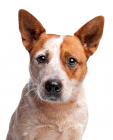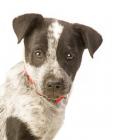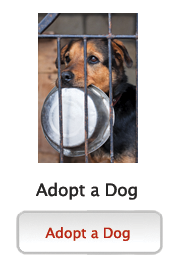Australian Cattle Dog
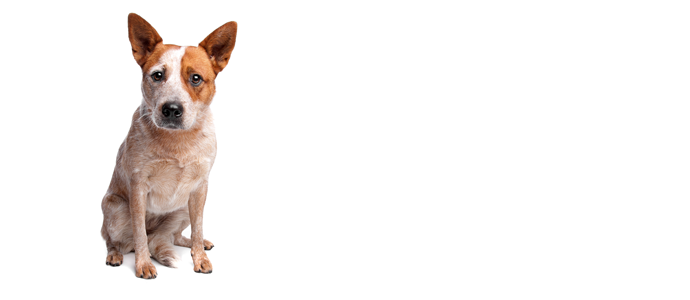
In my own words
Ga’day mate! People call me The Heeler, I’m a super herding cattle dog designed to withstand extreme heat. You see, my Aussie climate gets pretty piping and before I came along there weren’t a canine that could stand it. I’m built strong and sturdy, an instinctive leader of the pack. I even got Dingo in me. I need it because I’m a herding dog. My master and me, we spend our days working on the ranch. With all the energy I have pent up in me, there’s no better release than working hard out in the open. My Master praises me when I do a good job and I let him know my appreciation with a nuzzling. I don’t require much affection. I’m as tough as old boots and do just fine on my own. But truth be told, I love nothing more than coming back to my family after a long days work. I recall when I was a pup, I’d nip them thinking they were cattle. My master, put me straight now my bad habits are a thing of the past. Now I watch over them the whole night through, guarding my family!
My ideal owner(s)
Singles
Those who are active, sporty types
Families
Hunters
Cattle breeders
What they say about me
High-energy
Intelligent and cunning
Active & requires outdoor stimulation
Alert
Easily bored
Please read on, to find out more about me, and whether I will be someone you can be happy with for the next 12 years, or even longer!
Is this Australian Cattle Dog for you?
Test your knowledge about the Australian Cattle Dog
Information essential about the Australian Cattle Dog
Kennel Club Group:
Herding Dog
Size:
Weight: Males 32-35 lbs (15-16kg) Females 30-35 lbs (14-16kg)
Height Males 17-20 inches (43-51cm) Females 17-19 inches (43-48cm)
Popularity:
This breed is considered to be one of the three most popular dog breeds in Australia. They’re often found in the company of ranchers and cattlemen, however they are also common household pets
Breed History:
Originating in Australia during the 19th century, the Australian Cattle Dog was bred for endurance, herding abilities, and toughness. The Australian Cattle Dog rivalled dogs exported by settlers from Europe that were not able to handle the long distances and inhospitable climate of the new continent. In response, Australian, George Elliott created a cattle dog, by crossing Dingo-blue merle Collies with Dalmatians and black and tan Kelpies. Some sources say the Bull Terrier breed may have been added as well.
This resulted in excellent working dogs perfect for herding cattle on large ranches. The dogs worked the stock quietly yet forcefully, willing and able to drive cattle across vast distances under harsh, hot dusty conditions. With superior stamina, the breed was well suited to Queensland. Both its guarding and herding instincts are very strong.
In 1893 Robert Kaleski wrote a standard for the breed. In 1903 the standard was approved in Australia. In 1980 the breed was fully recognized by the American Kennel Club after years categorized as a miscellaneous breed. The Australian Cattle Dog has also been categorized into various "Heeler" dogs, referring to its herding skill of snapping and biting cattle's heels.
Character:
The Australian Cattle Dog is a loyal, brave, hardworking, herding breed. As one of the most intelligent breeds, they’re not the kind of dog to lie around the living room all day or live happily in the backyard with only a 15-minute walk. They need much more exercise than that and something to occupy their mind daily or they will become bored, leading to serious behavioural problems. They need action in their life and will do best with a job. Protective, they make an excellent guard dog. They are absolutely loyal and obedient to their master.
The Australian Cattle Dog is compact, strong, alert, and agile. This breed is trustworthy, courageous, and is exceedingly devoted to the duties they are given. A member of the working and herding group, the Australian Cattle Dog is a combination of substance, balance, power, and hard muscular condition.
Temperament:
The Australian Cattle Dog can sometimes be suspicious of people and dogs they don't know. They exhibit a high level of dominance thus can be very aggressive to other dogs if allowed to be pack leader. Teach your Australian Cattle Dog that you are alpha and you will not tolerate him fighting with other dogs.
The Well-balanced Cattle dogs are good and trustworthy with children. Some will nip at people's heels in an attempt to herd them and an owner needs to tell the dog this is not acceptable behaviour. If you are adopting a pet for a household, avoid working lines, as these dogs may be too energetic and intense for home life.
An extremely intelligent, loyal, and affectionate breed, the Australian Cattle Dog is protective of their family, home, and territory. They thrive on human interaction and activity but are easily bored which can lead to serious behaviour issues. This breed is generally not good with children they have not been raised with. Moreover, they typically do not get along well with other household pets or cats.
Conformation:
The Australian Cattle Dog is a courageous, tireless, robust, compact working dog. The dog is agile, well muscled, powerful and determined while working. The length of the body is a little longer than it is tall. The tail is held moderately low hanging at a slight curve. The front legs are straight, strong, round bone, extending to the feet. The feet are round and the toes are short.
The skull is broad and slightly curved between the ears, flattening to a slight but definite stop. The ears are wide-set, moderate in size, and pricked when alert. The nose is black. The dark brown, medium-sized eyes are oval in shape. The teeth should meet in a scissor-bite, with the lower incisors closing behind. The dog has a smooth double coat with a short dense undercoat.
Colour:
Training:
Early intense socialization and obedience are crucial for the Australian Cattle Dog. This breed is extremely obedient. Australian Cattle Dogs do not respond to harsh or heavy-handed methods. Training must be done with firmness, fairness, praise, consistency, and patience. They are very talented in such areas as herding, agility, retrieving, guarding, competitive obedience, and in learning tricks.
Problems can and WILL arise with meek owners, and or owners who do not provide the proper amount and type of exercise.
Care:
The short haired, weather-resistant coat needs little care and is very easy to groom. The Australian Cattle Dog needs weekly brushing with a firm bristle brush. Bathing should only be done when absolutely necessary using a mild shampoo. Extra attention should be given to the coat during seasonal shedding. Shedding occurs once or twice a year (depending on sex status and region).
Health:
Common health issues that can afflict this breed are progressive retinal atrophy (PRA), deafness, hip dysplasia, elbow dysplasia and osteochondritis dissecans (OCD).
Less Common Health Concerns that may arise in this breed are cataract, Persistent pupillary membrane (PPM) and von willebrand's disease (VWD).
You may also like:
If you like Australian Cattle Dogs, you may be interested in breeds of the same size »
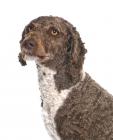
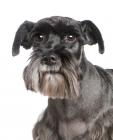
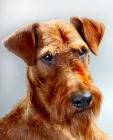
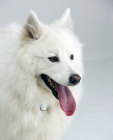
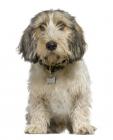
If you like Australian Cattle Dogs, you may like other breeds with similar characteristics »
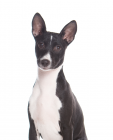


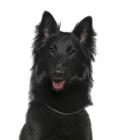
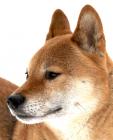
Advice on choosing your breed »
Find an animal shelter or rescue home where a Australian Cattle Dog is waiting for a new home »
The following grid gives a fast track review, which covers all breeds. You can apply it to help you decide if an Australian Cattle Dog is suitable for you, the environment where you live, your personality and your lifestyle. On the grid, 1= strongly disagree, and 5= strongly agree. For example, if you are looking for a dog that likes to swim, look down the list under Activities, and you will see that Australian Cattle Dogs love water to roam outdoors making them excellent jogging companions, scoring 5. If you want security, look down the same list, and you will see that Australian Cattle Dogs are an aggressive canine that are protective of their families, scoring 5. You might like to save or print off this section and keep it for reference while you check some other breeds before making your final choice.
Be the first to rate this breed »
|
*PLEASE NOTE: All our breed profiles are general, and all dogs are individuals. Always talk to the breeders and meet the owners you are buying from. Try to meet the dog and its parents if it is a puppy in their home environment.








